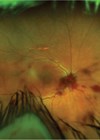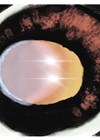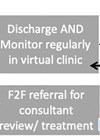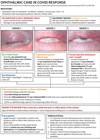Trainees
Orbital cellulitis - an overview of the diagnosis and management
Periorbital (preseptal) and orbital cellulitis are infections of the subcutaneous tissues of the eye. They are differentiated by the location of the infection. Periorbital cellulitis refers to infection of the eyelid and subcutaneous tissues anterior to the orbital septum, whereas...
How to pass the FRCOphth part 2 written
The part 2 written exam comprises of 180 multiple choice questions – spread over two 120-minute sessions. According to the most recent college exam reports, the pass rate ranged from 45 to 70% in 2019/2020. Most trainees seem to sit...
Innovation update: key advances in eyecare transformation in the last year
Vishal Shah and his co-authors reflect on examples of innovation in eyecare delivery published in the last year and the implications for the future of eyecare services. The “new normal” is an overused phrase to describe extraordinary measures that have...
The power of the full blood count
Vishal Shah walks us through his thought process whilst highlighting the importance of routine investigations when dealing with unusual retinovascular presentations. Retinal changes can arise in anaemia, leukaemia, lymphoma, myeloproliferative and myelodysplastic syndrome. They are often the first manifestation of...
Ophthalmology specialty training applications: a costly affair?
Ophthalmology is one of the most competitive specialties to pursue training in worldwide. In the United Kingdom, the ST1 entry national selection competition ratio for the past few years has ranged between four to five applicants per post [1]. The...
The Duke-Elder exam: A medical student’s head start into ophthalmology
The Duke-Elder exam is a specialist ophthalmology exam intended for medical students to sit during medical school. It is named after Sir Stewart Duke-Elder, a pioneering Scottish ophthalmologist who was active in the first half of the 20th Century by...
“Beware of the pigment”
Using some captivating artwork, Iheukwumere Duru describes key features of pigment dispersion syndrome. Pigmentary dispersion syndrome (PDS) leads to pigmentary glaucoma (PG) in approximately 35-50% of patients with the condition [1]. PG is the leading cause of non-traumatic blindness in...
Sustainability in eyecare: Are virtual clinics the way forward in the diagnosis and monitoring of retinal disease?
Virtual clinics can be used successfully in screening and management of ocular conditions such as diabetic retinopathy, retinopathy of prematurity and age-related macular degeneration. Virtual clinics should be a considered as a more clinically appropriate modality of consultation, diagnosis and...
Digital eyecare – enabling better communication between primary and secondary care
Alexander Chiu and his co-authors highlight innovations influencing healthcare advancement and how trainees can get involved. Hospital eye services (HES) were under great pressure to meet demand, even before the COVID-19 pandemic. This pressure has increased with the cancellation and...
Human factors in the operating room
The importance of minimising human error in surgery is well established. This was initially sparked by lessons learned from the aviation industry in the 1970s after several fatal flight accidents [1]. This became a catalyst for a movement on training...
Should it be a mandatory requirement for medical students to receive the COVID-19 vaccine to attend clinical attachments?
The vast majority of medical students have positive attitudes towards the COVID-19 vaccine for themselves and patients, however, what about the small inevitable minority who resist it? Should they be prevented from attending clinical attachments in the NHS? It is...
Proning and the pandemic - ocular complications seen in critical care
Priyanka Sanghi and her co-authors explore the ocular complications seen in critical care units throughout the country as we treat patients through this challenging time. The SARS-Cov-2 (COVID-19) pandemic has placed the NHS and critical care services under immense strain,...















